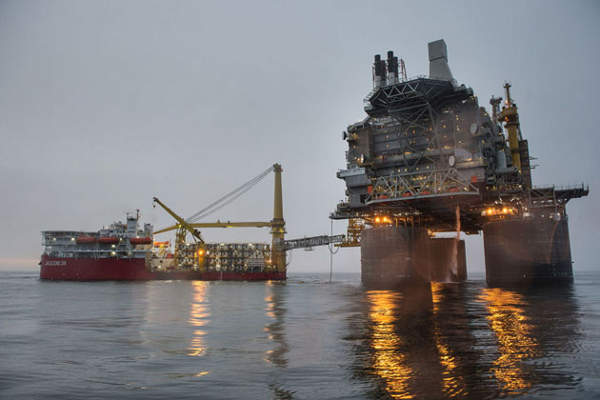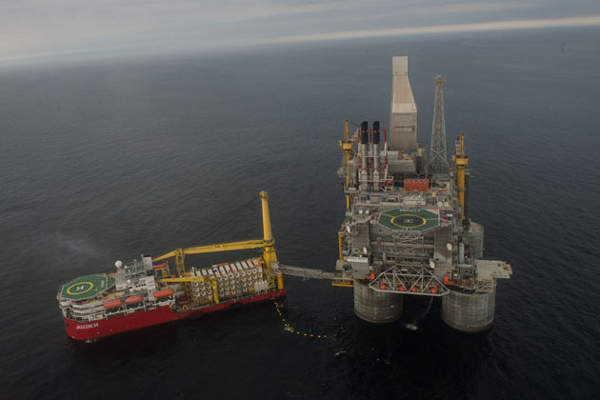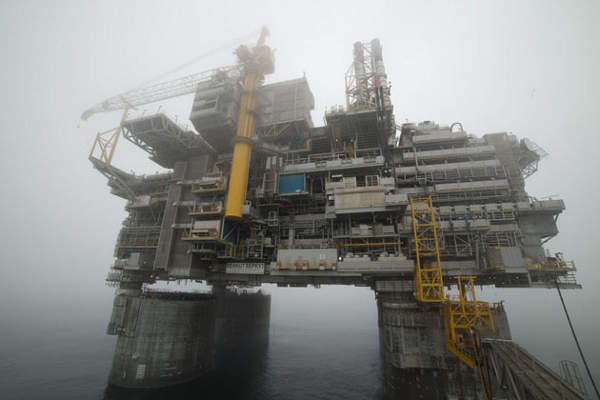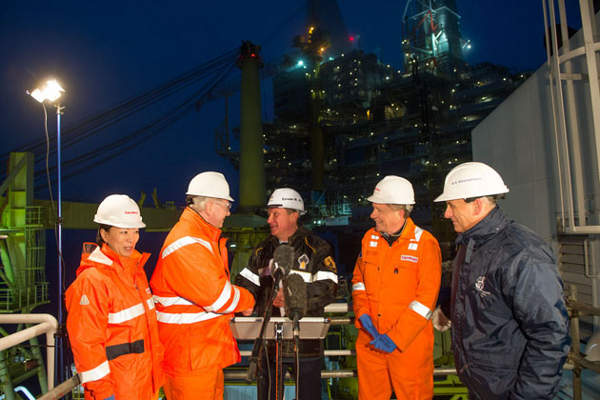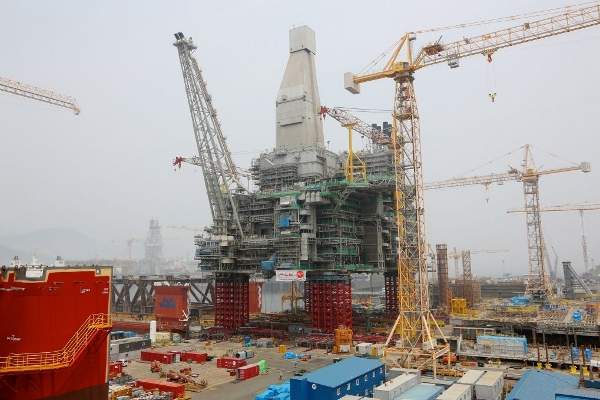Arkutun-Dagi is the third and final field developed as part of the larger Sakhalin 1 project, which also includes the Chayvo and Orlan fields. The field is located at water depths ranging from 15m to 40m and developed in phases starting from the northern section.
Production from the Arkutun-Dagi field’s first well started in January 2015. It is expected to increase to a peak of 85,000 barrels of oil a day by 2019. The field will increase the annual production capacity of Sakhalin 1 by 32.5 million barrels (4.5 million tonnes) of oil. The total annual production from Sakhalin-1 project is estimated to exceed ten million tonnes by 2018.
Discovered in 1989, the Arkutun-Dagi oil and gas field is located 25km offshore Sakhalin Island in the sea of Okhotsk, approximately 25km east of the Chayvo field and 18km north-east of the Orlan platform.
Sakhalin 1 ownership and project details
The partners in the Sakhalin 1 project include operator Exxon Neftegas (30%), Rosneft-RN Astra (8.5%), Sakhalinmorneftegas-Shelf (11.5%), SODECO (30%), and ONGC Videsh (20%).
Extensive exploration activities were carried out at the site from 1996 to 2001 and construction was started in 2002. Phase one involved the development of the Chayvo field, which started initial production in October 2005 and reached peak production of 250,000 barrels (33,000t) a day in February 2007. Development of the Odoptu field under phase two started in May 2009 and production commenced in September 2010.
The fields are estimated to hold potential recoverable resources of 2.3 billion barrels (307 million tonnes) of oil and 485 billion cubic metres (17.1 trillion cubic feet) of gas. Production from the project is expected to continue through to 2050 and the total investment is estimated to be approximately $10bn to $12bn.
Sakhalin 1 phase three development plan
The Arkutun-Dagi field is being developed using an ice-resistant fixed platform named Berkut (translated as Golden Eagle), the biggest offshore platform of its kind in Russia. The platform is placed on top of a gravity-based structure (GBS) fixed to the seabed at a depth of 35m. A total of 45 wells, including 28 oil-producing wells, 16 water injection wells and a cutting re-injection well, will be drilled at Arkutun-Dagi.
Oil produced from the field is transferred to the existing Chayvo onshore processing facility (OPF) via an approximately 25km-long well-stream flowline and further to the De-Kastri export terminal, while natural gas is sold domestically.
Berkut platform details and construction
The Berkut platform is designed to withstand extreme temperatures of up to -44°C, waves up to 18m-high and pressure of 2m-thick ice. The platform is 105m long, 60m wide and 144m high. Its topside is equipped with a drilling rig, processing facilities, living quarters, a helipad and ancillary facilities. The topside weighs 42,000t, while the total weight of the platform exceeds 200,000t. The drilling rig has a top drive of 142kN/m and a lifting capacity of 1,150t.
The platform’s GBS, which features four concrete shafts supporting the topside structure, was constructed in May 2012 and installed at the project site in September. The facility was constructed at Vrangel Bay, Vostochny Port in eastern Russia.
Two on-site batch plants were built to facilitate the construction of the GBS, which used 52,000m³ of concrete, 27,000t of steel rebar, pre-stressed cables and internal outfitting. More than 4,000 people were involved during construction.
The Berkut platform was successfully installed on top of the GBS in June 2014. Friction pendulum bearings were placed between the topsides and the GBS to withstand an earthquake of magnitude up to 9.0, the first of its kind in the offshore oil and gas industry. The platform is powered by four gas turbines of 60MW each and three auxiliary diesel generators rated 5.4MW each.
Contractors
The platform’s topside was constructed at Daewoo Shipbuilding and Marine Engineering’s (DSME) yard in Korea. Sakhneftegaz Engineering (SNE), a subsidiary of Worley Parsons was contracted to provide engineering, procurement and technical support services for the platform’s topsides.
The drilling rig was fabricated by Samsung Heavy Industries in Korea and the rig’s derrick, pipe barn, substructure, well control system and mud system were designed by William Jacob Management in collaboration with Worley Parsons and Parker Drilling. The steel valves for the platform were supplied by TY Valve Corporation of Korea.
The fire and blast wall equipment for the platform were supplied by MTE, whereas the SeaRox SL620 passive fire protection and ProRox Rocktight watertight cladding system for the soffit and underside of decks were supplied by Rockwool Technical Insulation. Microwave digital radio equipment for the platform was supplied by Hermes and the CCTVs for the platform were supplied by Hernis CCTV solution.
The engineering, procurement and construction of the GBS were performed by Kvaerner. The towage of the GBS from its construction site to the project site was carried out by Van Oord and the installation of the topside on top of the GBS was performed by ALE using its Mega Jack system.
Kentz Corporation provided preliminary engineering support services for the field. McDermott carried out the S-Lay installation of a 24.14km and 20in diameter FWS and a 22.53km and 20in diameter PWI pipelines, including 1.7km of beach pulls for both pipelines to Chayvo OPF.
Up to 374 OTC-primorye employees provided transportation services for the project. Clough’s commissioning technicians were also involved in the project.
Sovcomflot’s two multifunctional icebreaking supply vessels Vitus Bering and Aleksey Chirikov are contracted to protect the platform from ice. Sea Trucks Group’s Jascon 25 vessel provided additional accommodation for personnel at the field in late 2013 and the first half of 2014.

